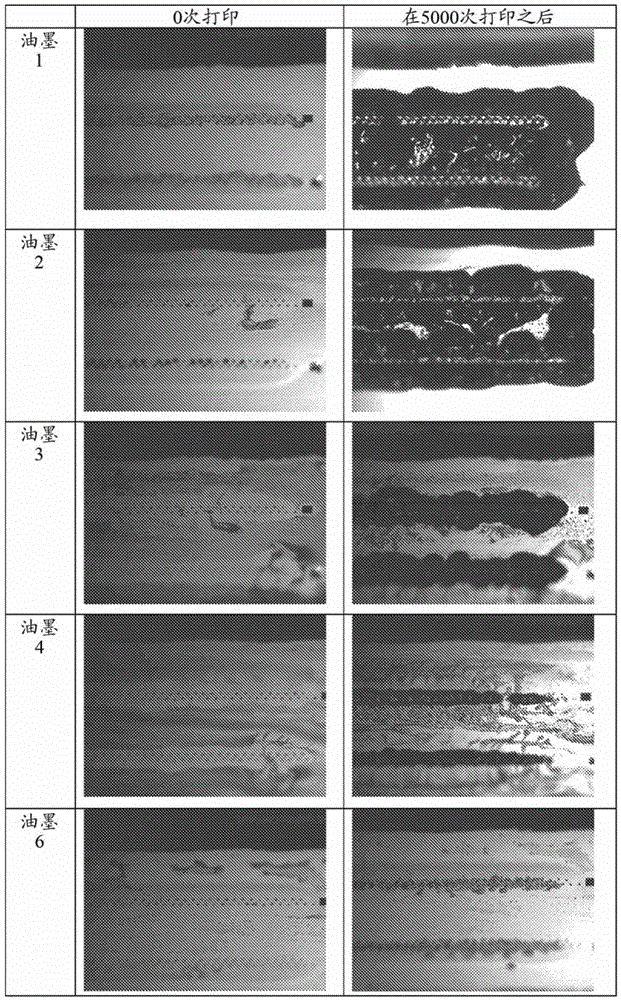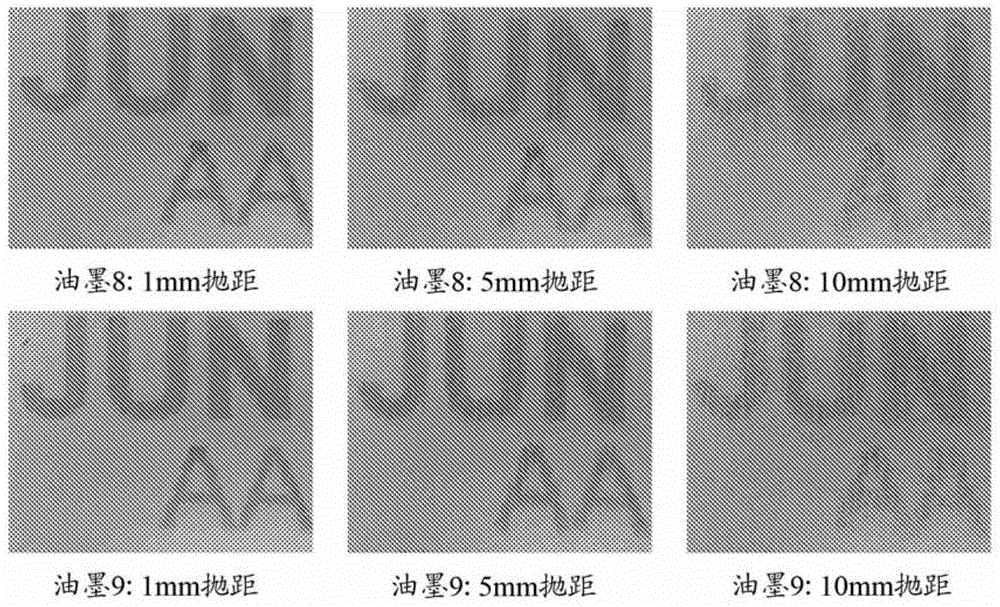An inkjet ink composition
An ink composition, inkjet ink technology, applied in the direction of ink, household utensils, applications, etc., can solve the problems of poor throw distance, poor reliability, etc.
- Summary
- Abstract
- Description
- Claims
- Application Information
AI Technical Summary
Problems solved by technology
Method used
Image
Examples
Embodiment 1
[0166] A set of thermal inkjet inks suitable for direct printing on food surfaces was prepared using the formulations shown in Table 1 with increasing levels of sugar (in this case xylitol) from 0 to 5%.
[0167]
[0168]
[0169] Table 1
[0170] Table 2 shows the viscosity measured using a Brookfield DV-II+ viscometer at 60 rpm at 25°C and the surface tension measured for each ink on a KSV Cam 200 optical tensiometer using the pendant drop method.
[0171]
[0172] Table 2
[0173] To evaluate the effect of sugar content on nozzle plate wetting, a Lexmark cartridge was filled with each ink and a standard 6-line alphanumeric code was printed. Images of the nozzle plate were taken before printing started and after 500 prints.
[0174] figure 1 It is shown that in the absence of sugar in the formulation (Ink 1 ), the ink would be seen bleeding out of the nozzle even when not printing, and after 5000 prints, significant nozzle wetting would be seen. With 1% sugar in...
Embodiment 2
[0185] To investigate the effect of sugar inclusion in ink formulations on throw distance, a set of thermal inkjet inks suitable for direct printing onto food surfaces were prepared using the formulations shown in Table 5.
[0186]
[0187] table 5
[0188] To evaluate the effect of including sugar (in this case, xylitol) on throw distance, each ink was filled into a Lexmark cartridge and then dropped as the distance between the substrate (in this case, paper) and the nozzle increased. Prints a standard 6-line alphanumeric code. Images were then captured of partially printed codes using a Celestron handheld digital microscope at 40X magnification.
[0189] image 3 The images in Figure 1 show that both inks give good image quality at a throw distance of 1 mm, and as the distance between nozzle and substrate increases, better image quality is achieved with ink 9, where in the formulation Include sugar.
Embodiment 3
[0191] To investigate the effect of including sugar in ink formulations on decap time, a set of thermal inkjet inks suitable for direct printing onto food surfaces were prepared using the formulations shown in Table 6.
[0192]
[0193] Table 6
[0194] To evaluate the effect of including sugar on ink decap performance, each ink was filled into a Lexmark cartridge and then printed with a standard 6-line alphanumeric code. After the cartridge was left open for 2 hours, the same 6-line code was printed again, and the ease of recovery of the printed code quality was checked. Images were then captured of partially printed codes using a Celestron handheld digital microscope at 40X magnification.
[0195] Figure 4 The images in show that the quality of the code printed using the control ink (Ink 10) is quite poor after a period of 2 hours, and the second and third prints do not really recover, indicating that the high print quality is unlikely to recover . When multiple suga...
PUM
 Login to View More
Login to View More Abstract
Description
Claims
Application Information
 Login to View More
Login to View More - R&D
- Intellectual Property
- Life Sciences
- Materials
- Tech Scout
- Unparalleled Data Quality
- Higher Quality Content
- 60% Fewer Hallucinations
Browse by: Latest US Patents, China's latest patents, Technical Efficacy Thesaurus, Application Domain, Technology Topic, Popular Technical Reports.
© 2025 PatSnap. All rights reserved.Legal|Privacy policy|Modern Slavery Act Transparency Statement|Sitemap|About US| Contact US: help@patsnap.com



